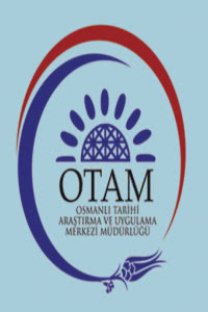Pupils' instruction at the rüshdiyyes in the region of the Danube Vilayet during the 60s and 70s of nineteenth century
1840-1870 arasındaki reform sürecine, Tanzimata, Osmanlı İmparatorluğu ve Fransa arasındaki yakın isbirliği damgasını vurmustur. Bu yüzden birçok devlet ve eğitim kurumunun yapı ve asli görevleri Fransız örneklerine göre biçimlendirildi. Bazı reform çabaları Tanzimatın hemen öncesinde baslatılmıstıı. Bunlardan birisi rüsdiye olarak adlandırılan bir okul açmak önerisiydi. 1839un baslarında Rüstiyeler mesleki okullarda basarılı bir eğitim için gerekli temel becerilere sahip öğrenci ihtiyacını karsılamak üzere tasarlandı. Reformlar süresince rüsdiyelerin eğitim amaçları tedricen dünya hakkında genel pratik bilgiler kazanımı, okuma ve yazma becerilerinin edinimi dahil olmak üzere Fransız Ortaöğretim Okulları ile uyumlu hale geldi. Din dersleri çocukların kendi ülkelerine ve padisaha karsı yüksek sorumluluk ve derin bağlılık kazanmalarına ilham kaynağı oluyordu. Bu amaçları gerçeklestirmek isteyen Osmanlı Hükümeti yaygın bir rüsdiye ağı kurdu. Bu makale, rüsdiyelerin müfredatının genel özelliklerine vurgu yaparak Tuna bölgesinde çocukların bu okullarda edindikleri gerçek bilgiye odaklanmaktadır ve Sofyada St. Cyril ve Methodius Milli Kütüphanesi Sarkiyat Bölümünde muhafaza edilen Osmanlı belgeleri ve gazete notlarına dayalı olarak hazırlanmıstır. Arastırma, Tuna Vilayetindeki rüsdiyelerdeki asıl öğretimin, eğitim amaçlarının uygulanmasının birkaç nedenden dolayı engellendiğini açığa çıkarmıstır: Ders kitaplarının sağlanmasının düzensiz olusu, bütün ana parçalar için kısa zamanın olusu, rüsdiyelerdeki kayıt yaptıran öğrencilerin eğitim için yetersiz olusu, Birçok öğretmenin eğitim ve disiplin bakımından yetersizliği, öğrencilere karsı dostça olmayan davranısların ve atama formalitelerinin acilen giderilmesi.
On Dokuzuncu Yüzyılın 60lı 70li yıllarında Tuna Vilayeti bölgesindeki rüstiyelerdeki çocukların eğitimi
The reform process of 1840s - 1870s, the Tanzimat, was stamped by the close collaboration between the Ottoman Empire and France. So the structure and the actual tasks of many state and educational institutions were modeled on French patterns. Some reform endeavors were initiated on the very eve of the Tanzimat. One of them was the proposal to launch a school referred as rüshdiyye. At the beginning of 1839 the rüshdiyye schools were designed to provide the pupils with basic skills necessary for the successful training at the vocational schools. During the period of reforms the educational goals of the rüshdiyyes gradually matched up these of the French superior primary schools including the accomplishment of reading and writing skills, the acquirement of common practical knowledge about the world. The lessons in religion had to inspire the children with deep devotion and high responsibility to their country and the sultan. Seeking to carry out those aims the Ottoman government established a widespread network of rüshdiyyes. While highlighting the general features of the rushdiyyes curriculum the present paper focuses on the actual knowledge which the boys in the Danube region acquired at these schools. It is based on newspaper notes and Ottoman documents hold at the Oriental Department by the St. Cyril and Methodius National Library in Sofia. The inquiry into the actual instruction at the rüshdiyyes of the Danube vilayet evinces that the implementation of their educational purposes was impeded by couple of reasons: the irregular supply of textbooks, the short time for the mastering of all subjects, the insufficient schooling of the pupils who had been enrolled at the rüshdiyyes, the inadequate training or the poor self-discipline of several teachers, the promptly settling of the appointment formalities and the unfriendly behavior to the students.
